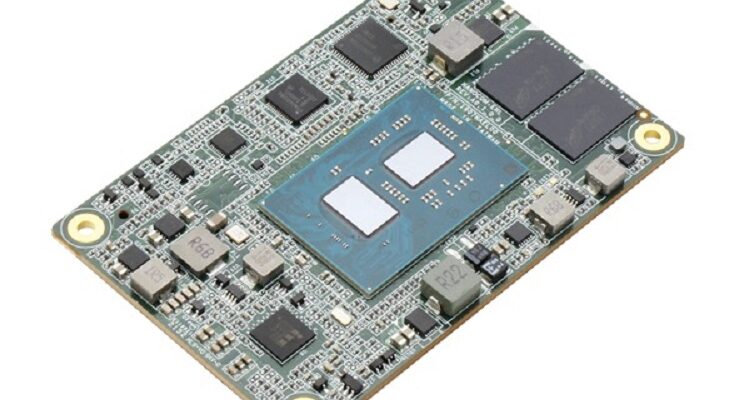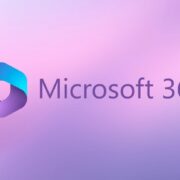Table of Contents
Key Takeaways:
- COM Express modules are compact, highly integrated computer boards that offer enhanced performance and efficiency.
- They adhere to the COM Express specification and consist of a processor, memory, and various I/O interfaces.
- Key features of COM Express modules include modularity, scalability, long lifecycle support, and reduced development time.
- Understanding different form factors is crucial for selecting the right module for specific applications.
- COM Express modules unlock performance through high-performance processors, advanced graphics options, and storage solutions.
- They optimize efficiency through energy-efficient designs, smart cooling solutions, and streamlined integration and maintenance.
- COM Express modules find applications in healthcare, transportation, IoT, edge computing, and more.
- Future trends include higher processing power, enhanced graphics capabilities, integration of AI and machine learning, and improved connectivity.
COM Express modules are a powerful solution that offers enhanced performance and efficiency for various applications. These modules are compact, highly integrated computer boards that can be easily integrated into a larger system, providing flexibility and scalability. In this comprehensive guide, we will explore the basics of COM Express modules, understand their key features and benefits, and delve into their applications across different industries. Additionally, we will uncover the secrets of unlocking performance and optimizing efficiency with COM Express modules, along with a glimpse into future trends and advancements in this technology.
The Basics of COM Express Modules
1. What are COM Express modules?
COM Express modules are embedded computer boards that adhere to the COM Express specification, created by the PICMG (PCI Industrial Computer Manufacturers Group). These modules are designed to be highly versatile, allowing easy integration into a wide range of applications, from industrial automation to healthcare devices.
At their core, COM Express modules consist of a processor, memory, and various I/O interfaces. The processor is the brain of the module, responsible for executing instructions and processing data. Memory provides storage for both instructions and data, ensuring fast access and retrieval. The I/O interfaces enable communication between the module and external devices, such as displays, sensors, and storage devices.
2. Key features and benefits
COM Express modules offer several key features and benefits that make them an attractive choice for embedded system designers:
- Modular and compact: COM Express modules are compact in size and follow a standardized form factor, making them easy to integrate into a larger system. Their modular nature allows for easy replacement and upgrades, minimizing downtime.
- Scalability: With different form factors and a wide range of processor options, COM Express modules offer scalability to meet the performance requirements of various applications.
- Long lifecycle support: The COM Express specification ensures long-term availability of compatible modules, providing reassurance to system designers and manufacturers.
- Reduced development time: By utilizing pre-validated COM Express modules, developers can significantly shorten their product development cycles, focusing on application-specific functionalities rather than hardware design. Get more knowledge about technological products, by checking out sources like https://edmentum.net/.
3. Understanding the different form factors
COM Express modules come in different form factors, each catering to specific application requirements. The most common form factors include:
- COM Express Compact: This form factor is the smallest of the COM Express modules, measuring 95mm x 95mm. It is suitable for applications with limited space constraints, such as portable devices and small form factor computers.
- COM Express Basic: The COM Express Basic form factor measures 125mm x 95mm, offering a larger footprint compared to the Compact form factor. It provides additional space for more I/O interfaces and higher-performance processors.
- COM Express Mini: The COM Express Mini form factor, measuring 84mm x 55mm, is ideal for applications where space is at an absolute premium, such as handheld devices and compact industrial systems.
- COM Express Extended: The COM Express Extended form factor is the largest of the four, measuring 155mm x 110mm. It offers the maximum amount of space for I/O interfaces and high-performance components, making it suitable for applications that require extensive customization.
Understanding the different form factors is essential for selecting the right COM Express module for your specific application, ensuring optimal performance and compatibility.
Unlocking Performance with COM Express Modules
COM Express modules are designed to unlock the full potential of high-performance processors, advanced graphics options, and storage solutions, resulting in enhanced system performance. Let’s explore each of these aspects in detail:
1. Harnessing the power of high-performance processors
COM Express modules support a wide range of high-performance processors, including Intel Core, Xeon, and AMD Ryzen processors. These processors offer multiple cores, high clock speeds, and advanced instruction sets, enabling efficient multitasking and speedy data processing.
By incorporating a high-performance processor into a COM Express module, system designers can leverage its computational power for demanding applications, such as video analytics, real-time data processing, and high-resolution imaging.
Furthermore, the modular nature of COM Express allows for easy upgradeability. Buienradar.net offers insights into technology trends that can help system designers stay informed about the latest advancements. As newer, more powerful processors become available, system designers can simply replace the existing module with a new one, ensuring their application remains at the cutting edge of performance.
2. Exploring the capabilities of advanced graphics options
COM Express modules offer a range of options for advanced graphics capabilities, including integrated GPU (Graphics Processing Unit) solutions and support for external discrete graphics cards.
Integrated GPUs, such as those found in Intel processors, provide a cost-effective solution for applications that require basic graphics rendering. These GPUs can handle tasks such as video playback, basic gaming, and multimedia content creation.
For applications that demand more robust graphical performance, COM Express modules can also support external discrete graphics cards. These cards provide dedicated hardware acceleration, enabling tasks such as 3D rendering, high-resolution video playback, and complex visualizations.
3. Enhancing overall system performance with storage solutions
Storage solutions play a crucial role in overall system performance, especially in applications that require fast data access and retrieval, such as real-time analytics and high-speed data logging.
COM Express modules support various storage options, including SSDs (Solid-State Drives) and NVMe (Non-Volatile Memory Express) storage devices. These storage solutions offer significantly faster data transfer rates compared to traditional HDDs (Hard Disk Drives), resulting in improved system responsiveness and reduced latency.
By integrating high-performance storage solutions into a COM Express module, system designers can ensure their applications can handle demanding data-intensive tasks with ease.
Optimizing Efficiency with COM Express Modules
In addition to unlocking performance, COM Express modules offer several features that optimize system efficiency, including energy-efficient designs, smart cooling solutions, and streamlined system integration and maintenance. Let’s explore each of these aspects:
1. Energy-efficient designs for reduced power consumption
COM Express modules are designed with energy efficiency in mind, offering features such as low-power processors, power management options, and advanced power delivery mechanisms.
Low-power processors, such as Intel Atom processors, provide a balance between performance and power consumption, making them suitable for applications that require a high level of energy efficiency.
Power management options, including dynamic frequency scaling and sleep states, allow the system to adapt its power consumption based on workload and user activity. This optimization can result in significant energy savings, particularly in applications with varying levels of activity throughout the day.
Advanced power delivery mechanisms, such as intelligent voltage regulators, ensure that power is supplied to the different components of the COM Express module in the most efficient manner possible, minimizing power loss and maximizing overall system efficiency.
2. Maximizing performance per watt with smart cooling solutions
Efficient cooling is essential to maintain optimal performance and longevity of COM Express modules. These modules employ various cooling solutions to dissipate heat generated by the processor and other components.
Heat sinks and heat spreaders are commonly used to transfer heat away from the processor and distribute it evenly across a larger surface area. These passive cooling solutions are highly effective and require no additional power.
In applications with higher heat dissipation requirements, active cooling solutions, such as fans or liquid cooling systems, may be employed. These solutions can effectively regulate temperature and maintain optimal operating conditions even under heavy workloads.
By implementing smart cooling solutions, COM Express modules can maximize performance per watt by ensuring that the system operates within acceptable temperature ranges, preventing thermal throttling and ensuring consistent performance.
3. Streamlining system integration and maintenance
COM Express modules simplify system integration and maintenance through their standardized form factors and well-defined interfaces.
The standardized form factors of COM Express modules ensure compatibility with a wide range of carrier boards and system designs, reducing the time and effort required for integration. System designers can easily swap out or upgrade COM Express modules without significant changes to the overall system architecture.
In terms of maintenance, COM Express modules offer long-term availability and support, minimizing the need for frequent hardware replacements. This long lifecycle support ensures that applications based on COM Express modules can be maintained and serviced for an extended period, reducing the total cost of ownership.
Applications of COM Express Modules
COM Express modules find applications across various industries, addressing the specific needs of sectors such as healthcare, transportation, and more:
1. Industry-specific use cases: healthcare, transportation, and more
In the healthcare industry, COM Express modules are used in medical devices, patient monitoring systems, and diagnostic equipment. These modules enable efficient data processing, high-resolution imaging, and connectivity with other healthcare devices, enhancing the quality of patient care.
In the transportation sector, COM Express modules are integral to in-vehicle infotainment systems, driver assistance systems, and telematics solutions. These modules provide the necessary computing power for multimedia playback, real-time navigation, and vehicle diagnostics.
Other industries, such as industrial automation, gaming, and retail, also benefit from the versatility and performance of COM Express modules. These modules enable real-time control, immersive gaming experiences, and intelligent retail systems, respectively.
2. Role of COM Express in the IoT and edge computing
As the Internet of Things (IoT) continues to grow, embedded systems play a crucial role in collecting, processing, and transmitting data from connected devices. COM Express modules are well-suited for IoT applications due to their compact size, low power consumption, and compatibility with the latest connectivity standards.
Edge computing, which involves processing data at or near the source rather than in the cloud, requires powerful yet compact computing solutions. COM Express modules provide the necessary computing power and flexibility for edge computing applications, enabling real-time decision-making and reducing reliance on cloud resources.
3. Future trends and advancements in COM Express technology
The future of COM Express technology holds several exciting possibilities. Some key trends and advancements include:
- Higher processing power: As processor technology advances, future COM Express modules are expected to offer even higher processing power, enabling more complex applications and data-intensive tasks. Check out canyongross.com for advancements in COM Express modules that deliver higher processing power for complex applications
- Enhanced graphics capabilities: With the increasing demand for high-resolution displays and graphics-intensive applications, future COM Express modules are likely to incorporate more advanced graphics options, such as support for 4K displays and real-time ray tracing.
- Integration of AI and machine learning: AI (Artificial Intelligence) and machine learning technologies are rapidly advancing, and future COM Express modules may include dedicated hardware acceleration for AI tasks, enabling applications such as facial recognition, object detection, and predictive analytics.
- Improved connectivity: As connectivity standards evolve, future COM Express modules are expected to support higher bandwidths, faster data transfer rates, and new protocols, enabling seamless integration with the latest IoT devices and networks.
The future of COM Express technology looks promising, with continuous advancements paving the way for more powerful, efficient, and versatile embedded computing solutions.













Comments